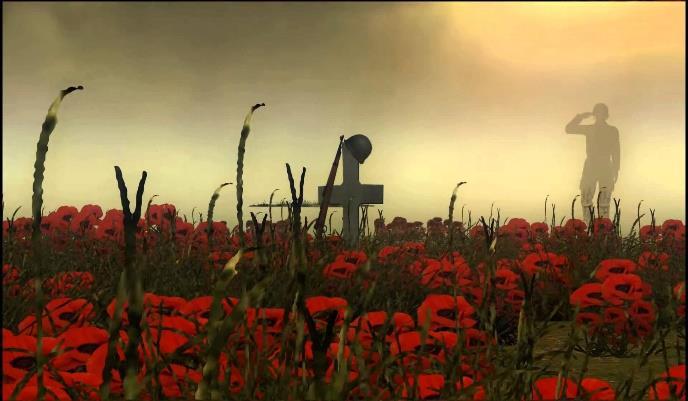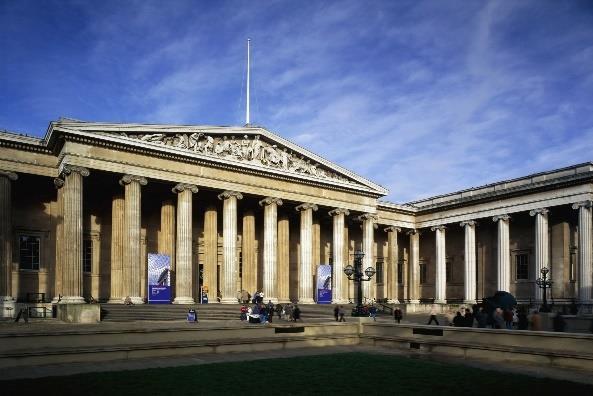The Gaia society





Our society
This is our Gaia society. A community similar to that of a family where people with a passion for geography, geology and history join together to inspire eachother and better ourselves and the knowledge of the world around us both past and present.
What do we get up to?
Since the beginning of this academic year, our society has been remarkably busy involving ourselves in many different events and activities. (All photography credits go the very talented Grace Gavin)
A fellow student, Leon Jones, gave an insightful and educational talk on medieval LGBTQ+ history We are planning on doing many more talks and lectures over topics YOU want to hear about. If you are passionate about something and want it to be discussed, come on down to our weekly meetings to share your ideas.
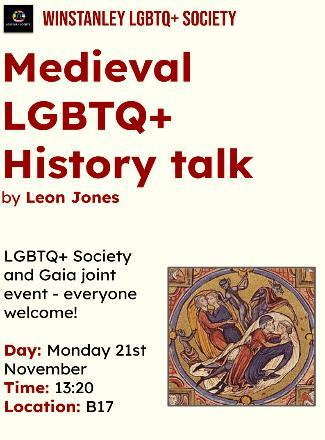
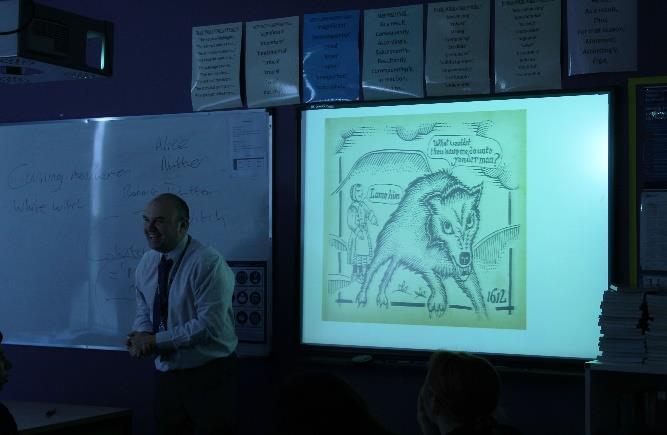

Everyone got involved in the "great geographical bake off". Cakes were based around geographical landscapes and all proceeds were donated to the Royal British Legion. This was in memory of Remembrance Day and everyone helped to raise £33.50 :)

 Phil Duckworth gave us a spooky talk about the Pendle witches during Halloween week. He also did one for Tutankhamun week.
Phil Duckworth gave us a spooky talk about the Pendle witches during Halloween week. He also did one for Tutankhamun week.
Railey, Callum and Shania recorded a 'Black history month' podcast and there is currently one for Remembrance Day being made Podcasts are a great, interactive way to immerse yourself and further your education without having to be watching something or paying close attention constantly. They can be listened to, for example, on the way home or when you’re cooking. Our podcasts are used to help inform and educate people on topics we believe need to be talked about. If you would like to be involved in a podcast for a topic you believe is important, pop down to our daily meetings and we would love to hear your ideas.
What have we got planned?
Everyone within the society is always working hard to plan and organize events and we have lots planned for the future. Below is an example of our Gaia calendar, which is used to track all upcoming events and it is always full of many things for everyone to partake in. Over the next few months, we have lots of exciting things happening I am sure there would be something for you to enjoy!
Here are just a few events we have planned:
• Multiple different debates are going to be taking place over the next few months > one of them is shown on the calendar above

• A Remembrance Day podcast is soon to be recorded and released

• More documentary and films will be shown at our weekly viewings


• A trip to London to visit the Alexander Exhibition and British Museum will be taking place in January 2023
If you would like to be part of our society, feel free to join us on Thursdays in A6 for our weekly Gaia meetings. You would be more than welcome, and we would be happy to see you there. For any other information regarding the society, please email our presidents (G001188@Winstanley.ac.uk and G002409@Winstanley.ac.uk) or Silvia Marques at Silvia.Marques@Winstanley.ac.uk
The History of Women’s Football
By Niamh Hanlon
After the UEFA Women’s Euros, Women’s football has been increasingly popular. 365 million people across the globe tuned into the final at Wembley Stadium. However, women’s football has not always been this popular or accessible.
The first recorded women’s football game was in 1895, between North and South. North beat South 7 1. 25 years later the first women’s international game occurred. Preston based Dick Kerr’s ladies beat a French XI 2 0. In the same year, 1920, the biggest crowd to date at a women’s game. 53,000 people went to watch Dick Kerr’s women beat St Helen’s ladies 4 0
Progress was halted in 1921, when the FA banned women from playing on Football League grounds, saying ‘the game of football is quite unsuitable for females and ought not to be encouraged.’ Players and others argued that this was because of envy that women’s football attracted large crowds and because the FA had no control over the money that the women’s game made. Alice Barlow, former Dick Kerr’s lady’s player, said ‘we could only put it down to jealousy. We were more popular than the men and our bigger gates were for charity.’ In other countries, women’s football was debilitated by bans that were like the English FA’s measures. The German FA banned women’s football from 1955 until 1970. In Brazil, harsher measures were introduced, the Vargas Regime and military dictatorship legally prohibited women and girls from playing football from 1941 to 1979. Despite the bans that the FA introduced, some women’s teams continued to play. The English Ladies Football Association (1921 1922) had to play some of its matches at rugby grounds.
After 48 years of limited women’s football, the Women’s Football Association (WFA) was formed with forty four member clubs, as a result of the increased interest after England Men’s victory in the 1966 world cup. The ban by the FA was then lifted in 1970 and the following year UEFA that national associations in each country should manage the women’s game. During the same year the first Women’s FA Cup final occurs, with Southampton beating Stewarton and Thistle 4 1.

In 1970 an Italian women’s football federation, known as Federazione Femminile Italiana Giuoco or FFIGC ran the 1970 Women’s World Cup in Italy, supported by the Martini and Rossi strong wine manufacturers, and entirely without the involvement of FIFA. This event was at least partly played by clubs. The 1971 Women’s World Cup with national teams was played in Mexico. The final was played at Estadio Azteca, the largest arena in the entire Americas north of the Panama Canal at the time. The game was estimated to have an attendance of 110,000 or 112,500
The 1990s held a lot of development for women’s football. In 1991, the WFA launches a national league, which kicks off with 24 clubs. Two years later, the FA establishes a Women’s Football Committee and the post of Women’s Football Co Ordinator. Also in 1993, the WFA National Cup competition is brought under the control of the FA and becomes the Women’s FA Challenge Cup, 137 teams enter. The following year in 1994, the FA takes on the administration of the Women’s National League and League Cup competition.

In 1999, the third edition of the FIFA Women's World Cup was hosted in the United States. The 1999 tournament was the first to field sixteen teams instead of 12 and features an all female team of referees and match officials, which is now common in the WSL. The average attendance was 37,319 spectators per match and the total attendance was 1.194 million, a record that stood until 2015. The USA won the tournament after beating China in a penalty shootout after a goalless draw. The Women’s United Soccer Association (WUSA) was established following the tournament and played three seasons before folding due to financial difficulties.


The 2000s saw progress for women’s football, 2008 being an important year for club and national football. Everton Women have a surprising win against Arsenal Women in the FA Premier league Cup Final, wining 1 0 and ending Arsenal’s 50 game unbeaten run. Despite this, Arsenal goes on to win their fifth straight Premier League and complete the double, winning the FA Women’s Cup, in front of a record 24,582 crowd at Nottingham Forest FC. Both England U17 and U20s see some success in the U17s and U20s FIFA Women's World Cups. England’s Senior team qualify for the UEFA Euro 2009 Finals, to be played in Finland in 2009. The England team reached the UEFA Championship Final for the first time in 25 years, losing out to Germany
2019 saw England win the SheBelieves Cup for the first time before going on to finish fourth at the FIFA Women's World Cup in France. Their semi final defeat by USA attracting a record breaking 11.7 million viewers on BBC One. Team GB women’s football team qualified to participate in the 2020 Tokyo Olympic Games. Another record was established in the Women’s FA Cup Final, with 43,264 fans watching Manchester City defeat West Ham 3 0 at Wembley.

In 2022, after years of finals and semi finals, England’s Lionesses, won the UEFA Women’s Euros. This was the first time any England senior team had won an international title since the 1966 World Cup. Serina Wiegman had only been in charge of the team for a year, with the Euros being the first tournament with the Lionesses. The success has seen Women’s football have more advertisement and has seen the games be televised more often during the 22/23 season
Women’s football still has a long way to go before becoming as popular and as funded as the men’s game, but improvements are being made by the FA. If you would like to watch any women’s football, download the FA Player for free. Games from the Women’s Super League, Championship and international games are all free to watch

The life of Margaret Nicholson
By Elizabeth Roberts
Best known for her assassination attempt on King George III’s life in August 1786, Margaret Nicholson suffered a life of torment and isolation.
At the time of the attempt, Margaret was living in lodgings at Wigmore Street in Westminster and was, by account of her landlord, Jonathan Fiske, “a bit peculiar but respectable nonetheless.” As an unmarried woman in Georgian society, life was difficult as she had to find a suitable way to support herself. From the age of twelve, she worked in various households as a maid but had lost her job due to improper conduct with a fellow servant, damaging her prospects for both future marriage and employment. As a result, she moved to Wigmore Street in 1786 supporting herself by sewing and weaving at home, an isolated and lonely life.
King George III was unique in the fact that unlike previous rulers, he allowed everybody under his rule to petition directly to him for change, despite their social standing or background. University of the West of England Professor Steve Poole suggests that “Margaret Nicholson felt something needed to be done to improve her life, so she petitioned the king … she thought she was due a property settlement of some sort and she thought she was due a decent marriage, possibly to the king himself.” Margaret Nicholson petitioned over twenty times to the King but received no satisfactory response, leading her to believe that stronger action was needed for her to get the outcome that she wanted.
On 2nd August 1786, concealing a desert knife within a blank piece of paper, presumed to be another petition, Margaret Nicholson stood outside the gates of St James's Palace, waiting for the King. As he stepped out of his carriage, she approached him as if to present him with the petition. An account published several years later in 1822, stated that Nicholson “struck with a concealed knife at his (the king's) breast, which happily he avoided by drawing back. As she was making a second thrust, one of the yeomen caught her arm, and, at the same instant, one of the King’s footmen wrenched a knife from her hand. The King with great temper and fortitude, exclaimed, ‘I am not hurt. Take care of this poor woman. Do not hurt her.’”
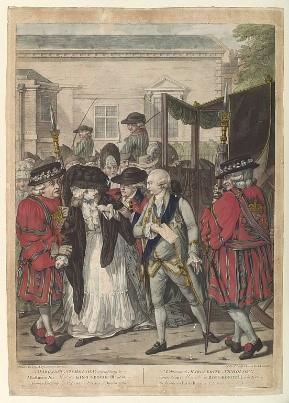
The King, who was known for his unstable mental state, recognised that Nicholson was ‘mad,’ and therefore insisted that she should not be put to death despite trying to commit regicide, the highest form of treason. Instead, she was admitted to Bethlem Royal Hospital, also known as Bedlam, a mental hospital notorious for its outdated methods of treating mental illnesses. It was in Bethlem that Margaret would spend the rest of her life


Upon entering the hospital, Nicholson was taken to a cell and confined in chains for five years until 1791, when she was deemed safe enough to be unchained, giving her more liberty within the walls of the hospital. In 1787 she was admitted to the prolonged stay wing, then known as the Incurable Wing, and was allowed to receive visitors, although there are no records of any

All mental illness was treated the same at Bedlam, inducing recurring bouts of vomiting and diarrhoea, and by bleeding from the veins. As well as this, the skin would be blistered, and patients would have their heads shaved and be placed in cold baths. For Margaret, this physical torture lasted for several years despite several records suggesting her sanity. William Knighton, later Keeper of the Privy Purse to George IV, visited Margaret Nicholson at Bethlem Hospital in 1797 when he was a medical student and recalls that she “talked very rationally with me for some time, and I sat down in her cell. Speaking of the extreme cold, she said she supposed it was January in London as well as there.”
To both her nurses and visitors, Margaret was observed to be well despite her supposed insanity, however due to her crime of treason, she could not be released back into society. She suffered through years of outdated methods in attempts to “cure” her, despite appearing to be fully recovered.
Margaret Nicholson died on 14th May 1828 after spending 42 years in solitary confinement at Bethlem. Her crime made her an instant celebrity at the time with at least four people writing false biographies. In 1810, the poets Percy Bysshe Shelley and Thomas Jefferson Hogg published a volume named the Posthumous Fragments of Margaret Nicholson. As she withered away in a cell at Bedlam, she faded away into history, only to be remembered as the “would be assassin” of King George III.
New Egyptian Queen previously lost to the sands of time discovered near Cairo
By Ash Burke
The Tomb of an Egyptian Queen along with 100 mummies and 300 coffins has recently been discovered near Cairo. This discovery follows the recent unearthing of objects relating to the pharaoh Teti and the sarcophagus of King Ramses II’s treasurer Not much is known about the Queen at this time. However, Egyptologist Zahi Hawass told Live Science “We have since discovered that her name was Neith, and she had never before been known from the historical record, it is amazing to literally rewrite what we know of history, adding a new queen to our records.”
The name Neith is significant in ancient Egypt as this newfound queen shares her name with a Goddess. The goddess Neith was worshipped by many from early in the Predynastic era through to the arrival of Roman rule. She was the goddess of creation, wisdom, weaving and war, in addition to being worshipped as a funerary goddess.

During the excavations, archaeologists uncovered twenty two interconnected tunnels which are likely to date to the New Kingdom (from 1570 B.C.E. and 1069 B.C.E) unlike previous discoveries in Saqqara that date to the Old Kingdom or the Late period.
“Burials from the New Kingdom were not known to be common in the area before, so this is entirely unique to the site,” Hawass added. “The coffins have individual faces, each one unique, distinguishing between men and women, and are decorated with scenes from the Book of the Dead. Each coffin also has the name of the deceased and often shows the Four Sons of Horus, who protected the organs of the deceased.” Inside the coffins lay the bodies of well preserved mummies which, despite their age, remain untouched and in good condition. “Work exhuming the mummies from the site will continue. Many are in good condition. Archaeologists will X ray the remains to learn what they can about the ages of the bodies at death, or any obvious causes of death,” Hawass said. “The preserved nature of the mummies shows that the New Kingdom had mastered the mummification process, including the evolution of coffins, some with two lids and one with a mask of a woman made of solid gold.”

Additionally, inside the coffins and tomb shafts, they also found artifacts such as games, small figurines (known as shabtis) and statues of the god Ptah Sokar, who represents the cycle of birth, death, and resurrection. The nation plans to display some of these artifacts at the Grand Egyptian Museum which will be opening soon.


Visiting Auschwitz
By Lily Henson
I was recently privileged enough to visit Auschwitz with the Holocaust Educational Trust charity. You may find “privileged” a strange word in this context, yet I greatly believe that being given the opportunity to be a witness, and to be able to share what I have learned, is a liberty and a privilege.
Elie Wiesel, human rights campaigner and Holocaust survivor, says that ‘When you listen to a witness, you become a witness.’ So, by reading this article, you too can prevent the atrocities of the Holocaust from being forgotten.
I first think it important to discuss what the Holocaust actually is. Historians most commonly use the term to describe the murder of approximately 6 million Jews by the Nazis. Although other groups were also victims of Nazi persecution, only Jews were targeted for complete destruction. Therefore the “Holocaust” typically refers to the anti Semitic nature of Nazi persecution, and not generally all victims of Nazi oppression and discrimination.

I first applied to work with the charity by writing an essay about the contemporary relevance of the Holocaust in society today. How oppression and prejudice is sadly not incongruous to modern times and how pivotal it is to be active in discussing ongoing discrimination.
After gaining a place with fellow student Grace O’Brien, I completed a series of online seminars. Working with a group, I learned first about pre war Jewish Life, through case studies in an attempt to humanise the victims. For example, we looked at this photo of Ota and Katerina Margolius.
Dated around 1930, in Prague, Czechoslovakia. The young Jewish couple were newly engaged, and their happy faces could not imagine what would happen to them. Ota was an international hockey player, and a leader of a Jewish sports club. Katerina had trained at art school and then became a hat maker.

The Germans invaded and introduced antisemitic laws in March 1939. By September, all Jews over the age of six were forced to wear a yellow Star of David badge in public. From late 1941 onwards, Czech Jews were sent to the Terezín Ghetto, from where most were eventually transported to killing sites in eastern Europe. Ninety percent of the Jews in Czechoslovakia (almost 315,000 people) had been murdered, including Ota Margolius.
Ota and Katerina Margolius’ story is something I will always remember. But Ota’s heart breaking death and Katerina's life after of pain and grief towards her late husband is just one example of so many. It is difficult to contextualise the millions of murders as it is such an incomprehensible amount. Looking at case studies helps to remember that each number was a person. Every single one had a favourite colour, a favourite song, a favourite novel. Each person had a family who loved them, and a dream they were not given the chance to achieve. It would have been a tragedy in itself if just one of these people had died, and their cumulative murders represent the utter horror of the Nazi’s actions.
After learning about individual stories, and the history of the Holocaust, I visited Poland to see what was left after the war was won. On the 9th of November 2022, I flew from Manchester to Krakow, and it is something I will never forget.
Learning about the horrors and the people is an entirely different experience to seeing the camp in itself. I visited a once Jewish inhabited town, before seeing both Auschwitz and Auschwitz Birkenau. Stepping foot into the place where the lives and futures of innocent people were decided is surreal. I remember standing next to the train tracks in Auschwitz Birkenau, whilst my guide read a harrowing story. After victims arrived at the concentration camp, (undergoing a horrific, sometimes weeklong, journey without food, water, or bathrooms) they were placed into lines. A Nazi guard would decide their fate often one line for men and another for women and children. A mother, unknowingly, begged the guard to allow her son to join the line with her. She sobbed and desperately pleaded, wanting her family to stay together. Once the guard agreed, she condemned her son to immediate death.
I only realised after he finished the story, that I was stood in the very place where this little boy’s future was destroyed at the hands of the Nazis. Stories like this were common, the lives of so many were disregarded and their potential was taken.
I was also given the opportunity to attend a testimony from Holocaust survivor Mala Tribich. She provided an insightful glimpse into her life the impact of living in a ghetto and then going into hiding, being separated from her family. She also spoke of her cousin’s disappearance, and her imprisonment in Bergen Belsen where she contracted typhus and miraculously survived. After the war, Mala moved to England and got married, dedicating the rest of her life to sharing the consequences of discrimination and the detrimental affect it can have.
The Lessons from Auschwitz project has impacted me in so many ways. We must all bear witness to the Holocaust and do everything in our power to prevent it from ever happening again.
Dear Kitty
By Anna Mcglen
Anne Frank was born on the 12th June 1929 in Frankfurt, Germany. Anne was the second daughter of Otto and Edith Frank, with their other daughter being born 3 years prior called Margot Frank. During the times of Anne’s birth, Adolf Hitler and the Nazi party were growing and gaining more supporters. Hitler infamously held antisemitic views and deemed all Jews as the country’s problem. The Jewish population were suppressed and endured prominent levels of discrimination as a result of Hitler’s influence in Germany.
In 1934, the Frank’s decided to move to Amsterdam, Netherlands because Anne and her family were Jewish which meant that they faced bad discrimination and were afraid of their future if they remained in Germany. Furthermore, in 1933 Hitler declared that Jews were no longer allowed to own businesses (along with other antisemitic laws) which affected the Frank’s as Otto worked in his father’s bank. This resulted in their decision to move to Amsterdam as their economic situation became poor. The Franks settled into Amsterdam well and Anne started to feel at home as she had learnt the language and made new friends. Otto founded a company which traded pectin, a gelling agent for making jam in order to support his family.


On the 10th May 1940, Nazis invaded the Netherlands. Hitler found the Netherlands appealing for occupation because they had weak international policies so it was easier control however, he claimed that the real reason why he invaded the Netherlands was to influence public option. Slowly, the Nazis introduced more laws and regulations which made the Jewish lives more difficult: Jews were no longer allowed to visit parks, cinemas or non Jewish shops and in addition to this, anyone Jewish could no longer own business which led to Anne’s father losing his company. Anne also had to attend a separate Jewish school.
In spring 1942 Anne’s father started furnishing a hiding place in the annex of his business premises at Prinsegracht 263. Just before Anne and her family went into hiding, it was her 13th birthday and she received her famous dairy, in which she referred to as Kitty. During Anne’s two years of hiding, she wrote about the events of the secret annex, but also her feelings and her own stories.
On the 4th August 1944, Anne and her family were discovered in hiding and arrested. It is interesting to note that even despite the raid, Kitty was preserved.
Anne was deported to Auschwitz (a concentration camp) and the others from the secret annex were transported to Auschwitz Birkenau. The train took three days while thousands were packed closely together in the transport wagon with little food, little water and only a barrel for a toilet. Anne, Margot (her sister) and their mother were sent to a labour camp for women and Otto was separated from them and sent to a camp for men.
In early November 1944, Anne was put on transport again: she was deported to the Bergene Beken concentration camp with Margot while their parents stayed in Auschwitz.
Conditions included a lack of food, freezing cold and contagious diseases. Unfortunately, Anne and Margot contracted typhus and in 1945, Anne and Margot died due to the disease: Margot first and then Anne slowly afterwards. Anne’s story ends with the heart breaking fact that she died just weeks before the end of the war.

Anne’s father Otto was the only one from the secret annex to survive the war and leave the concentration camps alive. He was liberated from Auschwitz by the Russians and soon learned that his wife, Edith, had died. He also discovered that both of his daughters were no longer alive.
When Otto Frank returned to Amsterdam, he visited the secret annex. After looking around he found Kitty the diary and Anne’s writing deeply impressed him. Otto published Anne’s diary two years: ‘Anne would have been so proud if she had lived to see it,’ Otto said in the first Dutch edition.
Anne Frank offered a vital insight into World War 2 as a young Jewish girl who was faced with anti sematic discrimination since the day she was born. Just by innocently writing her diary, it allows for modern historians to study the kind of life people lived at that time. Kitty the diary is extremely important to historians as this level of information and detail about day to day lives of the Jewish could have been lost and overlooked. However, thanks to Anne (and her father, Otto, for publishing it), her writing can echo the stories of thousands more. It continues to be taught in schools across the world and allows society to have a greater understanding of the injustice the Jewish population endured for most of the early part of the 20th century. Through this understanding and Anne’s legacy, we can hope that society has been educated enough to prevent such mutiny in the future and learn from such harsh demonstrations of prejudice and discrimination.

World history quiz
1) In which year was the Battle of Hastings?
2) Which battle ended the French’s attempts to dominate Europe?
3) The Trojan War was a battle between which ancient cities?
4) How old was Mary Queen of Scots when she ascended to the throne? 5) Who was the youngest King of England?
6) Who initiated the gunpowder plot?
7) Who was the first woman to win a Nobel prize? 8) In which year did Columbus discover America?
9) How many congressional delegates signed the Declaration of Independence? 10) Who is known as the father of history?
11) Who was the most powerful leader of Persia in the 6th century BC? 12) What is one of the seven wonders of the ancient world situated in Egypt? 13) Which British archaeologist discovered Tutankhamun’s tomb?
14) Who discovered the wreckage of the Titanic? 15) What year was the Magna Carta signed?
16) Who discovered penicillin?
17) Who was the second president of the United States?
18) Who was the only one of Henry VIII’s wives to receive a Queen’s funeral?
19) Who is known as the father of medicine?
20) Who was the first human to travel into space?
21) Who served as the final leader of the Soviet Union? 22) How old was Princess Diana when she died? 23) In what year did the French Revolution start? 24) What year was Pompeii destroyed in?
25) What was the name of Nazi Germany’s official secret police?
Why the Holocaust is still relevant today
 By Grace O’Brien
By Grace O’Brien
I was given the chance to participate in Holocaust Educational Trusts’ project, Learning From Auschwitz. This opportunity for me and Lily Henson was completely eye opening to the tragedy of the Holocaust. We were given the chance to learn about pre war Jewish life, which allowed us to put ourselves in the place of those victim to the Nazi’s actions. This experience helped us understand the reality of what took place, given it showed that the Holocaust was not just a black and white moment in history but a mixture of despair and hope. The Holocaust entails millions of experiences which cannot be summed up in one article. Its relevance is now greater than ever. As our generation ages, there will be less people around who can re tell these stories and experiences and so it will become much easier for the web of lies which led to this genocide to start spinning again. Therefore, by teaching the next generation about the lives of people deeply affected by the Holocaust, we are ensuring that proactivity against antisemitism, and any other form of prejudice, is strengthened. As our mentor said when we visited Auschwitz, by telling one person, you are ensuring that the memory of what happened lives on.
The Holocaust, one of the largest racially motivated crimes of modern history. Fuelled by antisemitism and pan Germanist ideas, it is remembered by most as a horrific crime against humanity. With six million Jewish lives taken as a result, there is no doubt as to why it would be considered vital to remember the lives lost and take it as a warning from history. However, some may debate the relevance of the Holocaust today, perhaps even believing that humanity has learnt its lesson from the atrocity, though, that would not be the case. In this, I will be exploring the Holocaust’s significance to this day and where its relevance can be found in present humanitarian issues.
In the Great Depression in 1929 there was an exponential increase in unemployment. That, paired with the German people’s lack of trust in the government, due to the Treaty of Versailles as a result of WW1, at the time helped to create a perfect situation for the use of a scapegoat, allowing the Nazis an advantage to propel their xenophobic views. It is crucial to look at what caused the plethora of situations which led to the Holocaust as it allows us to be aware of its indications in modern politics. However, it is not enough to just say ‘never again,’ we must educate ourselves on how these conditions were met to cause such a massacre. The Holocaust proves to us the dangers of fascism and antisemitism but also the dangers of ignorance and what consequences can emerge from the disregarding of these inequalities. A shocking study from The Guardian discovered that, “67% of UK respondents wrongly believed that the government allowed Jewish immigration, when in fact the British government shut the door to Jewish immigration at the outbreak of war.” These alarming statistics provide evidence that education of the detrimental mistakes made by ‘allies’ in this period are not taught as much in schools and universities. The filtering and censorship of the facts such as this is what leads to misinformation of history. Consequently, this can lead to historical moments being distorted. By not taking action to stop such a spiral, xenophobia and other prejudice ideas are given the resources to grow and spread.

This leads me to one of my reasons for why The Holocaust is therefore relevant to this day by remembering The Holocaust, educating younger generations on its accurate history and holding those who preach these extremist beliefs accountable, we can combat these xenophobic ideas. Therefore, The Holocaust’s relevancy derives somewhat from the fact that it helps us notice the signs of evil and how we should organise against it before it is too late.

Another reason for The Holocaust’s relevancy is that we can apply the genocides committed then to what is happening in our modern day humanitarian crises. Like I said previously, The Holocaust presents us with a light to shine on humanitarian issues as it is a universal bedrock for inhumanity. One example of this would be Uyghur population in Xinjiang, China. An article from BBC News which was updated in May 2022, mentions how China has been detaining “more than one million Uyghurs against their will” in which they are being sent to “re education camps”. However, the BBC collected police files which described a “shoot to kill policy for those trying to escape.” Now, what makes this report so relevant to The Holocaust while not being on as big of a scale is not just that they are using camps to confine people against their will, but that a certain group, which is almost 50% of the population, is being isolated and forced into labour and other horrific treatments. Not only that but women are also being harassed and smeared for speaking up against sexual assault in the detention camps. Such crimes were committed within the camps in The Holocaust as well, for example, forced experiments which makes it not surprising as to why it would hold relevancy now. However, the treatment of immigrants in detention facilities in the US have also been exposed for their harsh treatment. The Guardian reported on a detention centre in the US and found that conditions were “horrible and filthy,” and that people were “caged up like animals.” These reports have a certain thing in common dehumanisation. The treatment that occurs in these situations may not be as close to the brutality of The Holocaust however the lack of dignity and humanity still raises the point that we have not learnt our lesson.
One of my final points I would like to finish on would be to address how the importance of The Holocaust today can make a positive impact: Anne Frank’s story is a brilliant case for this. Her diary illustrates the tribulations that Jewish people felt at the time and showed the resilience which many possessed. Her diary has gone on to inspire millions across the world to find solace and gratitude in the smaller things in life, as it is what she had no choice but to do. Nevertheless, The Holocaust also inspires us to be aware of subtle scapegoating and dehumanisation. Its relevance gives us the tools to watch out for states implementing censorship or similar tactics used by the Nazis. A quote from the Holocaust survivor, Primo Levi says that “Monsters exist, but they are too few in number to be truly dangerous. More dangerous are the common men, the functionaries ready to believe and to act without asking questions.” What we can gather from Levi’s point here is that indoctrination and a lack of questioning can give any monster the power they wish to have. Therefore, The Holocaust’s significance is clear It is a reminder that our outlook on humanity and morals can become easily corrupted which therefore requires educating younger generations on these atrocities in history and advocating against present ones. The only way we can ensure that humanity does not fall into the depths of genocides like The Holocaust again is by holding not only those with an audience, like politicians and public figures, accountable but also ourselves.

The Stork Inn

 By Amy Moss
By Amy Moss
When you walk past the Stork Inn today, you are greeted with a saddening sight: boarded up grey windows, firmly locked doors and an atmosphere of desertion. Sadly, this has been the case since 2019 when the inn in Billinge closed down with the owners reporting that there would be ‘no prospect’ of the much wanted return of the local institution. But how would this be different if you walked past the inn at a different point of time?
Unfortunately, if you were to find yourself on the site during the English civil war it would be bad news for you. Prior to the inn being built, the site was home to a Cromwellian gaol called the ‘Tower Prison’. During the war, it was used by Cromwell (rumoured to have stayed on the premises on several occasions) and his parliamentarians to jail royalists. Infamously, on one occasion a royalist died from typhus. Perhaps, this is the reason why so many ghost stories about the inn circulate. Most famously, there are stories about visitors to the inn being able to see a man dressed in a civil war uniform and a hell hound in neighbouring London Fields. In reality, these supernatural rumours are probably a result of Billinge being an extremely superstitious community in the 19th century, even resulting in many Wiganers making fun of Billingers for this belief. Nevertheless, this has enticed many ghost hunters to visit the inn.
Although the crypt that housed the cells still survives (now the cellar of the inn). The gaol was torn down in 1752 and the ‘Stork Hotel’ (now ‘The Stork Inn’) was built in its place. During August 1890, the landlord James George Howard was charged with selling adulterated rum, after a police constable saw his wife topping up a bottle of rum with water. Luckily, the case was dismissed after he claimed his wife had no idea that what she was doing was wrong, as she was not used to mixing spirits. Howard was let off with a warning to be more careful. Later, the namesake of James George Howard (who also lived in the Stork Inn) is listed to have been killed in action during WW1 on 16 June 1915 when he was 26 after fighting with the Liverpool Regiment. Obviously, the Howard family who resided in The Stork had a significant role in shaping local history.
In the following decades, The Stork was an energetic pub which served as a vivid drinking destination with hearty meals and as a resting place for travellers. It is fondly characterised as previously having a historic stone horse mounting block as well as having a bricked off tunnel leading to St Aidan’s church.

While it is a shame that The Stork is no longer a working pub, hopefully with the planned conversion into 18 apartments, another few centuries of history will be created on the already historically rich premises.
 By Phoebe Reast Jones
By Phoebe Reast Jones
This year, the 2022 FIFA World Cup is being held in Qatar, spanning across approximately a month (20th November 18th December) and costing an estimated $220 billion. However, this tournament has much more than an economic impact, especially when considering both the environmental and social controversies surrounding this event.



Qatar itself is a small country situated in Western Asia bordering Saudi Arabia to the South as well as the Persian Gulf which surrounds around 80% of the country. It won the bid to host the 2022 World Cup in 2010 and since then many huge issues have become known

Regarding specifically the tournament itself, many questions have been raised regarding both environmental concerns and issues regarding human rights abuse. Qatar has been heavily criticised for its reliance on low wage migrant workers in preparation for the tournament, who have been bound to work through an incredibly coercive labour system known as Kafala, often without them knowing just how legally binding the contracts they are agreeing to are. Furthermore, since 2010, throughout preparation for the tournament, it is suggested that thousands of workers have died (exact numbers are impossible track due to Qatar’s secrecy regarding human rights) and many more have come forward to Amnesty International about abuse ranging from wage theft and dangerous working/living conditions to physical and, in some cases, sexual abuse. This clear record of violations of the worker’s most basic human rights whilst constructing spaces for the World Cup has been heavily criticised by many NGOs (Non Government Organisations) and begs the question of why FIFA, who will be well aware of such disgusting actions, have allowed it to go ahead?
In addition, many environmentalists have huge concerns regarding the carbon emissions of this project and FIFA’s apparent desire to hide them. According to the association itself, the estimated carbon footprint of the whole event sits at 3.6 million tonnes of carbon waste, however, Mike Berners Lee, a professor from Lancaster University suggests that the footprint sits at a much higher value, at over ten million tonnes.
This deliberate misleading on behalf of FIFA is an extremely dangerous decision, given the worldwide impacts this sporting event could have on society. In fact, despite FIFA’s claims of programs to offset the environmental impacts, there have been some clear corners cut, such as the assumption that all flights to Qatar would be one way. Despite claims that a large solar plant would help provide energy for the event, climate activists are still sceptical of how effective FIFA’s arguably performative claims will be. Only time will tell.
Moving away from the World Cup itself, there are many questions surrounding Qatar’s long standing history with its treatment of LGBTQ+ and female members of society. Many human rights activists fear that Qatar is attempting to ‘sports wash’ (a term coined in 2010 to describe the use of a sporting event to remove scrutiny regarding controversies) these discriminations.
Why is the 2022 Qatar World Cup problematic?
Within Qatar’s legislation there are high penalties for those who pursue homosexuality, but many take further issue with the widespread police harassment and intimidation of LGBTQ+ Qataris, with many queer fans expressing concerns regarding their own safety when travelling for the tournament. This has been brought to media attention through actions such as Joe Lycett and his challenging of public figures who are contributing towards media for the World Cup. In addition, Qatar’s clear restrictions surrounding free speech such as imposing regulations concerning journalist access to the World Cup and sanctions for those challenging the countries’ often divisive beliefs and values raise questions surrounding how little we truly know of the mistreatment and discrimination in Qatar
Combining all of this shows a clear picture of a tournament heavily drenched in problems and concerns from an international audience, ranging from environmentalists to LGBTQ+ people. It begs the question, how far are large corporations such as FIFA willing to go, in an attempt to hide probable corruption and questionable morals. Arguably, at the heart of this controversy lies not social or environmental distress, but instead economic and political gain, as is common in our ever interconnected and ever corrupt global society. This matter goes much further than just football.
Volcanoes on Venus
 By Rosie Houghton
By Rosie Houghton
Is there anything positive to say about volcanoes? They have the potential to be violent, destructive, and unpredictable. Volcanoes are mainly a nuisance for modern people, occasionally an exciting visual spectacle, but possibly deadly. If there are enough of them, and if they are strong and persistent, they have the potential to destroy the planet where they occur.
Modern day Venus is a scorching wasteland. It is over 464 °C, which is hot enough to melt lead. Due to this, only four of the twenty eight missions that Russia dispatched to the surface of Venus were able to send photos before they were destroyed by the harsh circumstances there. However, Venus in the present day could be vastly different from Venus in the past. According to some studies, the atmosphere of old Venus was comparable to that of the early Earth. There was also a chance that the planet's surface had a considerable amount of water. There may have once been primitive life on Venus, but the data is still insufficient to confirm or deny that.
According to recent research, the planet's current state may have been changed over time by large scale volcanic eruptions. Volcanoes were the end of primitive life on old Venus. The study shows how important volcanic activity has been in moulding Earth's habitability as well as how Earth narrowly escaped Venus' fate. The research was published in The Planetary Journal by Michael J. Dr. under the title "Large scale Volcanism and the Heat Death of Terrestrial Worlds".

The research implies that Venus' current atmosphere, with its extremely elevated temperatures and pressures, was formed by large volcanic eruptions of its own. More specifically, it claims a runaway greenhouse effect was produced by powerful outbursts over a timescale of just one million years.
When an atmosphere blocks a planet's heat from radiating into space, the runaway greenhouse effect occurs. Extreme temperatures rise because there is no way to cool down, like a greenhouse with all its vents closed. Venus lacks plate tectonics, which exacerbates the planet's greenhouse effect. The periodic opening of the crust caused by plate tectonics on Earth allows heat from the planet's interior to reach the surface. Additionally, it absorbs carbon dioxide from the atmosphere and transfers it into rock through subduction and weathering.
Because Venus and Earth are "sister planets", similar in size, and both rocky planets in the inner Solar System, their volcanic activity is comparable to each other. However, the crucial characteristic that unites them in terms of volcanism is their bulk composition. They are quite similar in composition since they were created in the same part of the Solar System.


We discover that there is a 30% chance that the biggest volcanic eruptions in known Earth history could have coincided with an event of comparable proportions.
If terrestrial planets have Earth like geochemistry and mantle convection dynamics, then several simultaneous volcanic eruptions may be significant drivers of the change from a calm habitable surface to a hothouse state.
Everything diverges at a certain point. Our knowledge of Venus' volcanic eruptions is far from being as complete and dependable as that of Earth's. However, the study demonstrates that, even in the absence of precise information, it is plausible that Venus experienced overlapping extreme volcanic activity that contributed to its demise.
Venus is far less hospitable for whatever reason, but Earth has stayed habitable for billions of years. If primitive, archaic life ever developed on Venus, it is long since extinct. Activity undoubtedly played a part in why Earth and Venus were so distinct from one another, even if we may never fully understand all the causes. After some new research and orbiter missions (VERITAS, DAVINCI, and EnVision) are complete scientists should have a greater understanding of Venus' diverging route.
Yes, volcanoes are beautiful and awe inspiring to look at but are truly wild and erratic in the grand scheme of things. They are a complex and dangerous phenomenon that we are yet to fully understand or able to explain. Earth has just scraped through from complete decimation of complete life extinction due to volcanic activity; Venus however was not as lucky.
The psychological truth behind Hitler’s regime
By Marcus Lomas
NSDAP, more commonly referred to as the Nazi party, were a fascist group who had the intent to destroy communism and, to some extent, specify the gene pool to the Aryan race. Yet it is obvious that a series of events must have occurred for Hitlers supposed master plan to be implemented within Germany, especially after the tragic loss and limitations due to the end of World War one. To identify such arguments, we must define two very key terms in psychology: obedience taking direct orders from a higher power to avoid consequence; negative reinforcement the encouragement of a certain behaviour to avoid punishment. It is conscious that both terms can help us define the manipulation of the German citizens under the rule of Adolf Hitler.

Some psychologists like Milgram studied the effects of obedience and suggested that German people are more obedient than American people: upon his research, he found that many of the Americans had a prominent level of obedience when directed to do a task. In the picture on the right, we can see the psychologist (E) ordering the participant (T) to electrocute the other individual (L) each time they get the answer wrong. The study was a recording that each time the volts were increased the screams were louder until they stopped. Could it be that the German people were merely obedient? Well firstly we must consider both the private and public beliefs of the German people within the Nazi era; many would have to express noticeably clear support publicly to avoid the wrath of either the SS or the Gestapo but privately they hated the immorality of Hitlers teachings. This is a critical example of negative reinforcement as the people are expressing a likeable behaviour to avoid the punishment form the SS and Gestapo which, most of the time, consisted of them being sent to labour camps to work until they revealed their “support” for Hitler.



However, could this be counter argued due to the education Hitler implemented upon the children of Germany as merely they would conform to fit in with a group. The SA (the brown shirts) was encouraged upon the young males and seen as a popular activity time that bonded individuals. We can implement the idea of identification a type of conformity into the question as the children would behave differently typically but would enhance a new role when in the SA group to be a more desirable character. Potentially the reason for the mass growth of the SA was due to many younger vulnerable minds being manipulated to want to become more desirable in a group.
Overall, it can’t be fully justified the actions of those involved in the atrocities we now pin against the 1940s however there is reasoning and logic as to why they continued such tasks even if they were dehumanising both themselves and the German people. Psychology clearly defines the unjust thought process behind many individuals but, can studies such as Milgram’s and Asch’s be generalised to the NSDAP?
Geography quiz
1) What country has the longest coastline in the world?
2) What is the capital of Malta?
3) What country is the newest in the world to be recognized by the UN?
4) In which UK city would you find the river Clyde?
5) What is the oldest recorded town in the UK?
6) If you travelled to the city of Volgograd, what country would you be in?
7) What is the name of the largest river to flow through Paris?
8) What did Ceylon change its name to in 1972? What is the most populous city in the US state of Illinois?
9) What is the highest mountain in Britain?
10) What is the capital of Peru?
11) What is the currency of Sweden? How many states are there in Australia?
12) Mount Vesuvius casts a shadow over which modern Italian city?
13) What country does the Canary Islands belong to?
14) What is the capital of Canada?
15) Which African country has the largest population?
16) What is the largest desert in the world?
17) What is the longest river in the UK?
18) What is the highest peak in Africa?
19) Constantinople and Byzantium are former names of which major city?
20) How many boroughs are there in New York City?#
21) How many countries still have the shilling as a currency?
22) What is the name of the microstate between Spain and France?
23) To the nearest billion, how large is the world’s population?
24) In which US state would you find Fort Knox?
25) Which London Underground line is represented as green on the tube map?
The changing faces of the dinosaurs we know today
By Faye Gregory Lambert
Hollywood and the media have made dinosaurs the popular icons that we know and love today. The vast majority of our favourite prehistoric animals have been through a series of scientific research leading to significant changes to look the way they do today. Some of the dinosaurs you recognise may not even look the same now as you thought they did. Every day, due to advances in technology and thinking, research in the palaeontology world figures out new evidence that constantly changes our perspective on the way the dinosaurs looked, lived and survived when they were alive.
One of the greatest examples of how palaeontological research has changed what we know about dinosaurs, is the crystal palace statues in London. The statues, unveiled in 1854, were one of the first examples of paleoart and show us just how much our understanding of certain species has evolved over time. Created by Benjamin Waterhouse Hawkins, the crystal palace statues portray what we initially thought the Iguanodon looked like when truly little information was known about dinosaurs. With the first dinosaur (Megalosaurus) only being discovered in 1824 (only thirty years before the Crystal palace statues were unveiled) and the word ‘Dinosaur’ only being used in 1841, it is obvious that at the point of creation, scientists did not have much evidence on how the animals looked or lived.
One of the most obvious research projects which influenced changes made to the species, involved a small spike shaped fossil found alongside an iguanodon skeleton. The first idea that scientists had was that the spike belonged on the top of the dinosaur's nose and therefore influenced our very first images of what we thought iguanodon looked like, meaning that it helped to create the portrayal of the species that the crystal palace statues exemplify.



However, in 1878 a huge discovery was unveiled in Belgium; thirty eight complete iguanodon skeletons were found which gave us a clearer perspective of how the anatomy of the animal looked. This discovery provided us with the knowledge that the previous ‘nose spike’ was a thumb claw, however this was not the final change to happen to the iguanodon as there were nothing but modern animals to base our images on. The image that lasted from the late 1800s the mid20th century was very much based on modern animals like the wallaby. It was thought to be an upright standing lizard that dragged its tail along the floor behind it, however now it no longer had the ‘nose spike’ but instead had the newly discovered thumb claws. But this still is not what our modern day image of Iguanodon looks like. In the 1960s, the Belgian fossils were re examined, and we discovered that the animals were not in fact solely bipedal but walked on all fours and their tail was outstretched and straight. Their tail being straight like this would not have allowed the animals to stand on two legs for very long but perhaps suggests that iguanodon could rear up onto two legs to scan for predators but not use two legs for its main method of mobility.

Another great example of how dinosaurs have changed due to research and technology is the spinosauridae family. The spinosauridae family has changed dramatically from how we initially thought they looked and what their lifestyle was like to what our research has led us to believe recently.

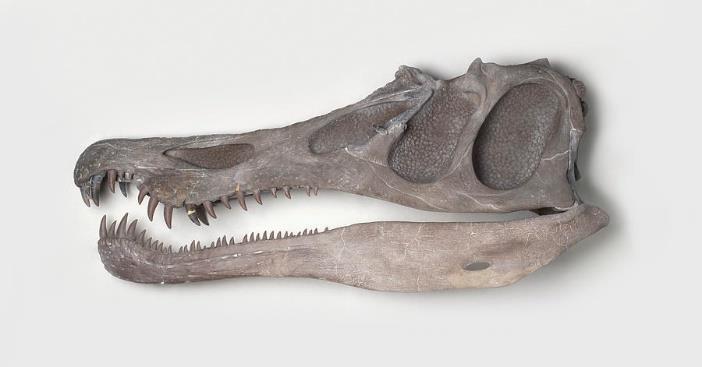
In 1983, William Walker uncovered a huge, curved claw in the Smokejack clay pit in Surrey. Upon his decision to take his specimen to a museum, it was discovered that this claw belonged to a species never discovered before, which sparked interest within the paleontological society and began the search for the animal that the claw belonged to. As a result of this search, one of the most complete dinosaur skeletons found in the UK was discovered and was named due to the primary characteristic that led to its discovery. Baryonyx Walkeri (‘Baryonyx’ meaning heavy claw and ‘Walkeri’ named after William Walker) was a part of a whole new family of dinosaurs that would eventually change our view on dinosaurs significantly. The species lived around 125MA, in a time where southern England was made up of large floodplains and forests, which helps to solidify some of the later information found about the animal and the other species in the spinosauridae family. Most carnivorous dinosaurs had tall, rounded snouts which allowed for powerful bites and strong grips, implying that they were strong, ferocious killing machines, however Baryonyx was different. The jaw belonging to Baryonyx was longer, slenderer and was spoon shaped, with its nostrils set high on its head. The shape of the jaw closely related to that of a crocodile, with sharp, pointed, conical teeth that had a fine serrated pattern on one edge. These teeth suggested to palaeontologists that the animal was highly adapted to gripping and holding prey…. maybe even slippery prey. Under further inspection, some of the stomach contents were found to have also fossilised, however the remains of its last meal proved to be a lot more unique than other dinosaurs that had previously been found. The remains of prehistoric fish scales were found within what would have been the stomach of Baryonyx, which proved that this dinosaur was like no other. On the other hand, in another Baryonyx specimen, remains of iguanodon were also found, which led to many theories of whether the animal was solely ichthyophagous or whether it hunted for terrestrial animals too. One theory suggests that the main diet of the Spinosaurid was fish based but if the main diet was in a scarce supply, it would scavenge for dead animals and not kill for itself as many believe that its jaw is not strong enough for hunting animals such as other dinosaurs. A similar situation, involving another member of the Spinosauridae family, ignited huge milestones in research of a certain species. The Spinosaurus Aegyptiacus was discovered in North Africa (another region that was once filled with lush waterways) and possessed the same spoon shaped jaw that Baryonyx did and the same nostril placement as its relative, however scientists made a huge discovery in 2008 which helped to change the way that we look at these animals and help us get one step further to working out how they lived and survived. The jaw of the Spinosaurus was put through a CT scanner which led to a fundamental place in our research and discoveries of the species.


A series of small holes and sinuses were located along the jaw, just like that of a crocodile, which happen to play a significant role when hunting in water as they often contain pressure sensors which allow the animal to detect prey whilst being in water. The placement of the nostrils also allows us to believe that the Spinosaurus hunted in water as they are high up and allow for it to still breathe whilst having its jaws submerged. The animal is also believed to have a centre of gravity that is quite far forward, implying that there is a high chance that it would have been comfortable for it to swim. Finally, the Spinosaurus’ tail vertebrae had long spines extending from it which after further study, implies that the tail had a large surface area and was connected by muscles, of which suggests to palaeontologists that its tail was used as a paddle whilst swimming and therefore leads to the conclusion, that is currently being investigated further: whether Spinosaurus and other members of the spinosauridae family could swim and how much of their time they spent in the water.
We will more than likely never ever know everything about how the dinosaurs looked and lived but as time progresses, so does our knowledge and so does our technology that is able to aid our discoveries even more. No matter how our knowledge and how modern technology improves, the dinosaurs will always manage to intrigue and fascinate us as we will never truly know everything about them
Evolution of fashion through the 1900-20’s: the images of the past, present and future
 By Freya Melia
By Freya Melia
Fashion. A multimillion pound industry that has outlasted every participant and every historical figure. We use it today for self expression and historical photo dating to identify the period that our favourite figures lived in. What can we infer from preferences? Can this give us a closer insight into how the future can be influenced through even the slightest butterfly effect?
I am sure we all remember Meryl Streep as Miranda Priestly and her monologue about the echoing contributions of fashion into everyone’s lives. Even today we are surrounded by influences from over one hundred years ago. Kim Kardashian and the overreaching aesthetic presence of the Jenner family is painfully obvious in the reworking of beauty standards in the 2010s which seems shockingly close to that of the early 1900s and late 1890s. Their Kylie Jenner was called ‘the Gibson girl.’ Created by Charles Gibson the iconic artist, the Gibson girl broke social boundaries and took part in sports (shocker!). It is highly expected that Gibson was influenced to create this character through the public admiration for Queen Victoria in her late years. The girls’ exaggerated bust and wide hips is reminiscent of Victoria’s matronly figure although Charles claimed it reflected ‘millions of American girls.’ Corset brands scrambled to keep up with the influx in swan bill corsets to achieve that ‘S’ shape. The royal family influenced a plethora of stylish adjustments, which changed most noticeably in hats.
Hats were mostly plain and held a flat circular shape with a small mound in the middle which is where a small bun of hair sat. Hats were held on to the head by skewering the small bun with a hat pin which could also be a handy dandy self defence tool in a pinch. These hatpins could also be utilised to attach decorations, for example feathers or flowers were popular and could be easily swapped out depending on the season, styles or availability at your local florists. Like the case of the chicken and the egg we cannot be sure whether hats were influenced by hairstyles or hairstyles were influenced by hats, but the latter case seems most likely. Hair was curled directly outwards and upwards to the top of the head before the ends were gathered in at a small bun or braid. For many, wigs and side pieces were attached to create a more effortless look and exaggerate the width contrast. We saw an increase in similar hairstyles in 2014 through 2018 when messy updos made a raging comeback. There is a high likelihood that these also came about because of earlier high collar dresses which crept back in during the 1910s.
With the turn of the century the influence of the Gibson girl came along with an iconic dress of the same name. The Gibson girl dress featured black or dark plain fabric, with four straps, two of them being decorative and a magnificently low neckline. Compared with the lace adorned, high shouldered pale pinks and greens popularised by bridesmaid illustrations, evening dresses had never been so scandalous. The neckline drew attention to the wearer’s shoulders and collar while a more fitted ‘fluted’ skirt reminiscent of daffodils and champagne glasses set the tone for the next decade when little changed except from the silhouettes becoming less drastic and more elongated, although they tended to maintain the larger bust.


The roaring twenties, the turn of the decade was instantly saturated with glitz glamour and Gatsby, right? Not quite.

While our favourite ‘it’ girls of the time donned stylish heels, short dresses, and even shorter hairstyles, not everyone during the twenties was a flapper, in fact most rural folk took the name as a harsh insult! 1925 1927 seems to have been the golden age of everything we consider twenties, the Harlem renaissance brought incredible artists like Duke Ellington and Louis Armstrong into both the spotlight and the prohibition speakeasies, while in London jazz clubs like the ‘kit cat’ were taking flight. Armstrong became the anthem of the flapper girls while the Charleston raged on elsewhere.

When you think of the flapper, an infamous tassel dress usually springs to mind but what if I told you that was nothing more than a microtrend, rejuvenated in the sixties as an ideal which became useful for fashion myths. The real flappers brought their own version of the Gibson girl dress called the ‘chemise.’ The chemise resembled 1900 nightwear more than a day dress, hanging from the low shoulders to just above the knee and forming a loose almost boxy silhouette which became the new representation of ‘youthful’, featuring commonly on the cover of vogue. Clearly women have never been allowed to age without hearing about some magical gadget. I am sure you’ve heard of Coco Chanel’s fondness of the ‘little black dress’, published in vogue on October 1st, 1926, her dress paved the way for modern fashion, bringing black from an eveningwear colour to an everyday staple and contrasting other maximalist styles by using the idea of ‘poverty deluxe’, an expensive interpretation of a simple design made with modest materials. It is flattering silhouette was intended to suit anybody, with one editor of the magazine nicknaming it the ‘Ford dress’ suggesting it would become as popular as the ground breaking model T car. The twenties were surely Chanel’s big break, since another of her designs the ‘bias cut dress’ is still to this day regarded as the most beautiful timeless dress by some critics. Its main appeal was that it could be pulled on and off with ease and it was quickly elevated with Coco’s middy blouse inspired use of traditionally ‘male’ fabrics such as jersey which paired beautifully with common daywear looks of pleated skirts and loose belted jumpers or cardigans. If a wearer was wealthy enough, fur outer trimmings became common on gloves, collars and coats which offered a cosy yet glam alternative to multiple layers. Other prevalent designers during this period were Elsa Schiaparelli, Sonia Delauney and Lanvain, who popularised the incredibly simple ‘garcon’ look. As dress hems hiked further up to their highest point in 1925, stockings became more popular and for the first time ever it became expected that women shave their legs for a ‘smooth’ look. Of course, at the start of the decade, styles were only just adjusting. Evening gowns in the first season of 1921 were unusually magnificent, becoming works of decorative art draped on impossibly refined silhouettes, the boyish or childlike look catalysed their new standards of beauty in illustrations by Paul Iribe and George Lepape (known as knights of the bracelet) in magazines Gazette Du Bon Ton, and Art Goût Beauté.

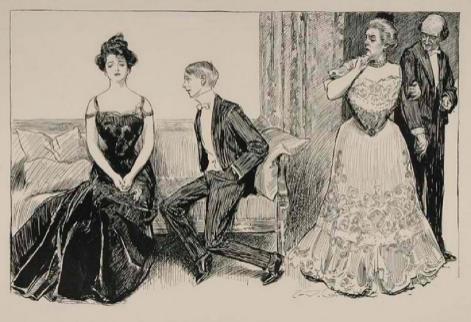
Evening gowns in the early ‘20s were heavily beaded to the point of absurdity, adding a flash of glamour and designating a piece as eveningwear. The word ‘chic’ popularised in the novel ‘gentlemen prefer blondes’ which would go on to star Marylin Monroe. ‘chic’ found itself in almost every fashion article and advertisement and we see it in reference to model 817 of the black crepe de chine. Known as the dress that ‘all the world was wearing’ one vogue editor claimed, ‘Especially chic is the arrangement of tiny tucks which cross in front….’

Of course, we cannot finish off the roaring twenties without talking about their hair and makeup. We all know the iconic Eaton crop, yet infinite variations of short haircuts came into circulation including Dutch, Pageboy, Orchid and Shingle Colleen Moore and Louise Brooks aided the effort to popularise short hair. These were perfectly complimented by ‘cloche hats’ which really hit circulation in 1922, invented in 1908 by Caroline Reboux and named after the French word for bell due to their resemblance. Cloches, like most other garments often found themselves dressed up with beads or lace and decorations could signal potential romantic partners. A knot was used if you were married while a flamboyant bow let everyone know that you were single and looking for the next partner. A more subtle indication was an arrow shaped ribbon, telling admirers that you were single yet with your heart set on another.

The widely recognisable twenties makeup featuring doll like and rounded smoky black eyeshadow with Clara bow’s perfect puckered peaks of red lipstick is quite frankly a work of art. It is thought that makeup provided women with a sense of control and familiarity after the horrors of the war and while originally more of an evening look, the discovery of Tutankhamun's tomb inspired some to experiment, bringing it into the daylight. Most products were invented in the late 1910s yet only became widely used in the 20s. Instead of powder which continued in cheek rouge, creams gave a smoother yet less natural finish, while cake mascara, activated to a paste with water, allowed use on the lashes and waterline and to create their smoothly arched brows. Twist lipsticks began to emerge, but it was much easier to apply from a flat tin and achieve that motion picture perfection. While I would love to say most applied makeup in this way, the majority steered away from the glamorous city girl style and turned towards facial contouring.
Vogue allows access to almost all their magazines from the first editions in the late 1800s on their website and even the covers give a fascinating insight into the aesthetic mind of a reader in its time. What can we see in today's trends and how do you think they will affect the years to come?

How democracy doomed the Polish-Lithuanian commonwealth
By Antoni Wegrzyn
When discussing medieval Europe, one nation is often forgotten despite its tremendous influence, not only in the past but also in the present, amidst the war in Ukraine. The power in question is the Polish Lithuanian Commonwealth (PLC), a colossal state by European standards which existed from 1569 to 1795. It famously suffered three partitions from its neighbours: Austria, Russia, and Prussia. Following the final partition, the state of Poland ceased to exist entirely on European maps. However, the true reason for the Commonwealth’s downfall is often debated, with some pinning the blame on the Commonwealth’s employment of democracy.
So, how did the PLC come to be? Although the Kingdom of Poland and the Grand Duchy of Lithuania have been in a DeFacto personal union since 1386, it was during the event known as the Union of Lublin in July 1569 that Poland and Lithuania became one state. In 1386 the Queen of Poland, Jadwiga bizarrely crowned as King Jadwiga to appease the Polish nobility married the Grand Duke of Lithuania, Jogailia [ Yo ga y la]. This marriage not only made the future Kings of Poland also the Dukes of Lithuania, but it also brought Christianity to the pagan Lithuanians who had resisted previous attempts to baptise the duchy. Jogailia became King and the Jagiellon dynasty was created
By the end of the 15th century, the Jagiellon dynasty ruled over much of central and eastern Europe; this included Poland and Lithuania as the heartland of the dynasty. The Battle of Grunwald (1410), saw the end of the Teutonic Order’s expansion along the south eastern coast of the Baltic Sea. Additionally, the defeat of the Teutonic knights marked the emergence of the PLC as one of Europe’s most powerful states.


The Union of Lublin 1569
King Zygmunt II Augustus of Poland had no heirs; and the Poles, fearing that when he died the personal union between Poland and Lithuania would be broken, urged that a more complete union be formed. After the Livonian Wars began (1558), Muscovy became a serious threat to Lithuania, with many Lithuanian gentry desiring a closer union with Poland and in 1562 made a proposal to merge the two states. However, powerful magnates feared that the union would diminish their power and thus blocked the proposal
When representatives from both countries at a meeting of the Sejm (Parliament) at Lublin (January 1569) failed to reach an agreement, Zygmunt II annexed the Lithuanian provinces of Podlasie and Volhynia (including the region of Kyiv), which together made up over one third of Lithuania’s territory. Although the Lithuanian magnates wanted to oppose Poland, the gentry declined to enter a new war, forcing negotiations for forming a union to be resumed in June. On July 1, 1569, the Union of Lublin was concluded, uniting Poland and Lithuania into a single federated state under one sovereign
The two nationalities were to be equals and thus equally represented in the Sejm; however, the influence and power of the Poles would surpass that of the Lithuanians as after Zygmunt’s annexation, one third of what was Lithuanian land was now represented in the Sejm by Poles.
Sejm, Szlachta and Democracy
‘‘One Cannot substitute the term ’nobility’ or ’gentry’ for Szlachta [Sh la hta] Because it had little in common with those classes in other European countries either in origin, composition or outlook. Its origins remain obscure. Polish coats of arms are utterly unlike those of other European nobles and lend weight to the theory that the Szlachta was of Sarmatian origin, they were also held in common groups of families, which suggested clan based origins. The attitude of the Szlachta begs analogies with the Rajputs of India or the Samurai of Japan. Like both of these, and unlike any other gentry in Europe, the Szlachta was not limited by, nor did it depend for its status on either wealth or land; “It was defined by its function, that of a warrior caste.’’ Adam Zamoyski
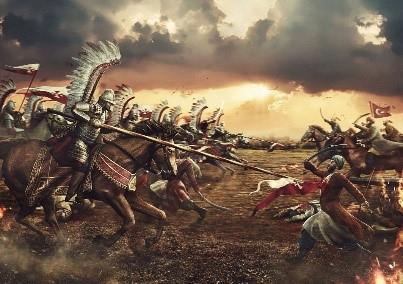
Upon the death of Zygmunt II Augustus, the Sejm met to elect a new king. The candidates were: Ernest of Habsburg, Henri de Valois, Ivan IV of Muscovy, John III of Sweden, and Stephen Bathory of Transylvania. Some 40,000 Szlachta [Sh la h ta] turned up at Warsaw to vote. Henri de Valois, brother of the king of France, was elected King. (Some 7% of the Population could vote, this would not be surpassed until the British Reform Act of 1832)

Henri made his way to Krakow during an exceptionally chilly winter and upon arrival it was clear that the new king and the Poles were ill matched 'the mincing, scented young man, with his earrings and his codpieces came as a shock to the robust Poles’ describes historian Adam Zamoyski. On 30th May 1574, the king of France died, and Henri slipped out of Krakow to assume his new role as king of France he intended to be both the King of France and the leader of the Polish Lithuanian Commonwealth. This outraged the Szlachta who produced an ultimatum for Henri, stating that he could either return or a new King would be elected. The Lithuanian merely sent a letter pleading him to return, a symbol of the diminishing power of the Lithuanians in the Commonwealth. Henri decided to ignore the ultimatum and did not return therefore a new election was held and a new king was elected by the Szlachta, setting precedent for the right of the Szlachta to elect kings and challenge them. This new power of the Szlachta to elect its kings proved to be the first sign of doom caused by democracy. From here the influence of the Szlachta would surpass that of the king. For example, in 1505 the Sejm removed the king’s right to legislate without the Sejm and upon the death of Kazimierz IV, the Sejm exercised this right and showed that the natural heir could be ignored as they planned to elect someone else
Democracy’s Final Blow
One of the rights of the representatives of the Sejm was the ‘Liberum Veto’ a rule which if used could single handedly force the Sejm to close and all debating to end, simply because one representative disagreed. The Veto was a forgotten rule, first used in 1652. Based on the assumption that all members of the Polish Szlachta were equal politically, the veto meant, in practice, that every bill introduced into the Sejm had to be passed unanimously. Therefore, it had the power to block bills and reforms which were desperately needed for the ailing Commonwealth. Foreign powers also often bribed the Szlachta to use the veto to destabilise the PLC. The combination of the Veto, foreign kings and the too powerful Szlachta caused the ultimate downfall and partition of the Polish Lithuanian Commonwealth the strongest and largest state in Europe for a brief time


Geology wordsearch


How the Victorian’s shaped our Christmas
 By Scarlett Wright
By Scarlett Wright
Does the Christmas we all know today come from the idealised perceptions found on our screens each year or does it come from one of the most well known stories of all time, told in every Christian Primary school across the UK, The Nativity?

Christmas today means something different to everyone, whether it is the time where your whole family comes together, a time to visit church and reflect on the birth of Jesus, or simply an excuse to over stuff yourself on turkey or roast potatoes. Whatever the reason we celebrate, the way we celebrate Christmas is due to the Victorians and their extravagance during the festive season. Queen Victoria’s husband, Prince Albert, had a major influence on our idea of Christmas when he introduced the well known holiday symbol, the Christmas tree, into every home in Britain. Although the German tradition of decorating a pine tree was well known by British aristocracy, it was Prince Albert that made it fashionable for the masses after an illustration of the royal family gathered around a decorated Christmas tree was published in London News. It became a key part of the Victorian perception of the desirable Christmas and clearly our own!
The decorations placed on the tree were not much different to how decorate our trees today, except for the complete obliviousness to fire hazards. Lit candles were attached to the branches, dried fruit, wrapped sweets, cakes, nuts and strands of popcorn or cranberries were all used as decorations health and safety gone out the window! Ornaments before the 1860s, much like all other festive decorations, were typically handmade out of printed paper and cottonwool shaped into figures of angels and children
During the festive season we send well wishes and give thanks to the people around us by sending cards, this too came from the Victorians. In 1843 when Henry Cole commissioned an artist to design a card for Christmas, this was the start of one of the most common holiday traditions, however with the cost of postage and the rising awareness of the environmental impact on recycling, this paper gift giving now seems to be in decline. In Victoria and Albert’s time, this tradition was costly and so only available to the aristocracy of society. However, the sentiment was so widely contagious that many were encouraged to make their own, and as printing technology became more advanced, the price of the card fell, and the Christmas card industry took flight.
Christmas crackers, or better known then as ‘kisses’ were originally love tokens. These sentimental table garnishes were often handmade, twisted pieces of coloured card concealing love verses and sweets to be gifted to an admirer. It was not until Tom Smith & Co began to mass produce crackers that they really became associated with the season in their staple colours of red, gold, cream and silver containing sweets, naff toys, dodgy paper hats and corny jokes as we know today. The cracker became so popular in fact that in 1891, eleven million were manufactured in a single season.
Now, onto the food! The Christmas feast had been prevalent long before the Middle Ages, but it was adapted by the Victorians with traditions many expect during the festive season. Mince pies, traditionally made using meat as dated to the Tudor times, were tried using alternative fillings of fruit, spices and suet. And the main attraction to the Christmas feast, aka the turkey, replaced beef and goose as the centre piece of the meal, though it was only eaten by the wealthier parts of society. It is a whole plate of goodness. Meat and lots of vegetables piled high means it is a perfect social meal without a lot of waste for a family, and therefore it became the dominant meat choice by the start of the 20th century.

Is it about the food, the family, or the presents? Is

Christmas too commercialised?
As we’ve mentioned the Victorians shaped Christmas to be centred around the family with all its festive activities bringing people together, but with Christmas starting in supermarkets in October, our screens filled with everything we think we need but in reality don’t and the highly anticipated wait for our favourite holiday characters appearing on TV or socials channels, have we lost the meaning of Christmas? Has Christmas today become too commercialised?
Though traditionally it is a religious holiday, Christmas today has been adapted in a different way by everyone no matter what their beliefs are. But have the pressures of a materialistic society replaced the sense of togetherness that the Victorians centred their celebrations around? For some, the perfect Christmas is centred around getting the perfect gift for the ones we love; we spend hours milling through shops, scrolling online for the right token, adopting obscene expectations upon ourselves. Parents spoil their children with the newest gifts, knowing that next year it will be that much harder to live up to expectations because of it. Shops drive up their prices for the holiday season, cashing in on Christmas lists and reluctant shoppers. Has the season of giving become a season of spending? But then, is it really all that bad? Despite the materialism, family values are still prevalent today as they were then. After all, who is it we are forking out cash for if not the ones we care about? So, does it really matter if we adhere to the pressures of the window displays or cereal box families, the joy is the same is it not?
Whatever you believe, however you spend it, and whoever you spend it with, we wish you a Merry Christmas!
Climate change
By Ruby Allen Brown
Global warming is an issue that alters the earth’s annual temperatures and weather patterns: a crisis which always is overlooked and de emphasised whenever the topic is discussed. We are told that one of the most promising strategies in mitigating climate change’s impact is alternative energy production. Solar panels; wind turbines; tidal barrages: renewable power is sold to us as a perfect, clean solution that we all ought to aim towards. We are told that it will bring economic development, energy security, and even improved quality of life to surrounding communities. While this is not necessarily incorrect to say, there are, in addition, a myriad of downsides to renewable energy which are often left unscrutinised.
The Hornsea 2 project refers to the world’s largest offshore wind farm, powering over 1.4 million homes. It is evident that wind turbines prove successful in reducing carbon emissions and energy imports. However, this is the only real benefit that they provide. Wind turbines kill endangered species of birds; create noise pollution; and can even impact the physical environment around them.
Another popular renewable energy option is solar power: over 900,000 homes in the UK have solar panels installed. Nevertheless, solar energy also has its limitations, mostly regarding mass manufactured panels which not only break down in a matter of years, but can also contain toxic substances including lead, chromium and cadmium. This can even go onto create further difficulty if the waste leaches into soil, infiltrating public water supplies.
Both solar and wind share an inescapable weakness in common: they are only able to produce energy when the wind is blowing or the sun is shining. In other words, they are not reliable sources of power. Even the most efficient wind and solar farms are only able to work optimally 30% of the time (although it should be made clear that wind and solar farms are able to produce at least some amount of energy around 75% of the time).
It is evident that humanity will always need a more reliable energy source: something we can fall back on to cover renewables’ downtimes. Nuclear power plants can produce energy 100% of the time, 365 days a year. Yet when it comes to public image, nuclear energy falls behind, evidently due to its association with nuclear warheads and accidents such as Chernobyl. It should be noted however, that the danger that reactor meltdowns pose are commonly exaggerated by the media. The official death toll directly attributed to Chernobyl is far lower than most would expect; rather than being in the hundreds or thousands, it is only 31.
Moreover, nuclear power statistically causes the least number of deaths per petawatt hour, with just 90, even if you include nuclear accidents such as Chernobyl and Fukushima. Compare this with hydroelectric’s 1400 deaths and solar’s 440 and it becomes clear that nuclear power may not be as dangerous as we have all been made to think.
Nuclear fission has numerous benefits which frequently go ignored. As well as having zero carbon emissions, nuclear power plants only produce one by product nuclear waste which, unlike other by products, is fully contained and cannot leak out into the environment. Furthermore, this waste can also be recycled and used in reactors multiple times. Due to its high energy density, nuclear power is also approximately 8,000 times more efficient than traditional fossil fuels, therefore producing much less waste
Without a doubt, all nations need to look towards eradicating fossil fuel based energy production: it is inefficient, produces far too much carbon dioxide, and is completely unsustainable.
The air pollution produced as a result of fossil fuels is already killing thousands of people, and it is slowly killing our planet too. But while these nations search for an alternative energy source, nuclear power should not simply be discarded for renewable power. Solar and wind turbines may be the more popular and contemporary option, yet this does not necessarily make them the better option.
Folklore of Europe and their origins
By Natasha Lancaster
Folklore, other than being a Taylor Swift album, are popular myths or beliefs related to a place, activity or group of people, usually spread by word of mouth. Over the years, we have gathered many stories surrounding various different places from the famous Baba Yaga, who is a recurring body in many Slavic folklore stories, and then closer to home we have creatures like the Banshee who resides in the countryside of Ireland.
One of my favourite pieces of Folklore (mentioned before) is Baba Yaga. Like any piece of Folklore, there are different depictions of her. In some, she is described as an old, hunchback witch/ogress who is said to eat and kidnap children who go wandering in her forest making her a perfect warning made to scare misbehaving children. However, other accounts show her as a kind, humble old lady who grants her wisdom and provides food for travellers (only if they can answer her riddles of course!) Nevertheless, the detail that is prevalent in all the stories and undoubtedly the most interesting is her peculiar house; she is said to reside in a forest hut with chicken legs. Working, moving chicken legs! She is also always equipped with a Pestle and Mortar and a broom stick.
The origins of Baba Yaga (roughly translated to “Grandmother Witch”) are unclear. Although she was first referenced in a book on Russian Grammar in 1755, she is thought to have been spoken about prior. Following her debut, she has been in many stories e.g. Baba Yaga’s Black Geese, Vasililissa the Beautiful, the Frog Princess and many more, in most of these she is depicted as a fairy godmother type with a sinister, selfish motive. Some argue that even though she is mostly described as evil, she was once a Slavic Goddess and Mother Nature type figure as there are notable ties between her and an early goddess of death, Lagaia Baba, making Baba Yaga a Slavic Persephone. Others argue that she is the personification of nature, which can be cruel (in storms) and kind (on nice sunny days). Despite her cannibalism and supposed allegiance with the devil, Baba Yaga acts as a catalyst for change as in a number of her tales, she can be seen as an agent of transformation helping the hero out of their slump and back on the road to success and safety.



The other character that I’ve mentioned prior is the Banshee. The Banshee is described as a beautiful female spirit whose piercing shrieks are said to herald the death of a family member. It is even said that each Irish family has its own banshee! On the contrary to popular belief, banshees don’t actually cause death; they only serve as a warning of it. Whilst they usually appear as pretty young women wearing a shroud, they can appear as: pale women in white dresses with long red hair; women wearing long silver dresses with silver hair; headless women carrying bowls of blood; old women with red, frightening eyes, in green dresses with long white hair; and finally old women wearing veil over their faces, dressed in all black with long grey hair (as if a mourner). Even though legend says that if banshee is spotted, she will vanish into a cloud of mist, I still know which form I would rather see out of the corner of my eye!

Not all banshees are terrifying though, some are said to simply be dead ghosts who are watching over their living loved ones, mourning for them by screeching songs of sorrow when they sense their upcoming death. On the other hand, the gruesome looking, horrible banshees are said to have been damned, hurt by or have other reasons to hate their family members and instead of moaning in sorrow, these banshees are actually singing to celebrate the future demise of the people they loathe. The origins of the Banshee can be traced all the way back to the 8th century in the tradition where women sang a sorrowful song to lament a recent death, accepting alcohol as payment. These women were called “keeners” and were said to be sinners, sentenced to being banshees for their entire afterlife.
Arguably the most famous banshee spotting was in 1437 by King James the 1st of Scotland when he was approached by a banshee who foretold the murder of the Duke of Atholl.
A less known folklore creature is the Nixie/Nix from Germany. The Nixie or Nix (simply translated to “water elf”) are types of shapeshifting river creatures half fish, half human like mermen (Nix) and merwomen (Nixie) who lure human women and men to drown. These creatures are similar to the Greek Siren, however the Nixe/Nix lure people with promises of joy and fortune accompanied by their captivating violin playing, whereas sirens aim to wreck ships, attracting them with their enchanting singing voices. As well as luring men and women, they also are said to pull in young children, who get too close to the water.

They can also mingle with humans in various different forms eg. beautiful women, old ladies or they can even make themself invisible. The only way to distinguish a nix/nixie when they’re in their human forms is through the slight wetness of their clothes hems. As well as shapeshifting, they also have the power of prophecy. However, they are not the most reliable source as they can easily be won over with gifts and presents.
The origin of the Nix/Nixie in German folklore is most likely from a water deity/ goddess which would have been common in ancient Pagen cultures as water is key to survival. However, as Pagen beliefs became less followed, the tales of the water deities gathered in the form of oral folklore. There is also a possibility that the Nix/ Nixie was deviated from faeries and nymphs due to their many similarities.

World history quiz answers
1) In which year was the Battle of Hastings? 1066
2) Which battle ended the French’s attempts to dominate Europe? The Battle of Waterloo
3) The Trojan War was a battle between which ancient cities? Mycenae and Troy
4) How old was Mary Queen of Scots when her father died and she ascended to the throne? 6 days old
5) Who was the youngest King of England? Henry VI
6) Who initiated the gunpowder plot? Robert Catesby
7) Who was the first woman to win a Nobel prize? Marie Curie
8) In which year did Columbus discover America? 1492
9) How many congressional delegates signed the Declaration of Independence? 56
10) Who is known as the father of history? Herodotus
11) Who was the most powerful leader of Persia in the 6th century BC? Cyrus
12) What is one of the seven wonders of the ancient world situated in Egypt? Pyramids
13) Which British archaeologist discovered Tutankhamun’s tomb? Howard Carter
14) Who discovered the wreckage of the Titanic? Robert Ballard
15) What year was the Magna Carta signed? 1215
16) Who discovered penicillin? Alexander Fleming
17) Who was the second president of the United States? John Adams
18) Who was the only one of Henry VIII’s wives to receive a Queen’s funeral? Jane Seymour
19) Who is known as the father of medicine? Hippocrates
20) Who was the first human to travel into space? Yuri Gagarin
21) Who served as the final leader of the Soviet Union? Mikhail Gorbachev
22) How old was Princess Diana when she died? 36 years old
23) In what year did the French Revolution start? 1789
24) What year was Pompeii destroyed in? 79 AD
25) What was the name of Nazi Germany’s official secret police? Gestapo
Geography quiz answers
1) What country has the longest coastline in the world?
Canada
2) What is the capital of Malta?
Valetta
3) What country is the newest in the world to be recognized by the UN? South Sudan
4) In which UK city would you find the river Clyde? Glasgow
5) What is the oldest recorded town in the UK? Colchester
6) If you travelled to the city of Volgograd, what country would you be in?
Russia
7) What is the name of the largest river to flow through Paris?
The Seine
8) What did Ceylon change its name to in 1972?
Sri Lanka
9) What is the most populous city in the US state of Illinois? Chicago
10) What is the highest mountain in Britain?
Ben Nevis
11) What is the capital of Peru?
Lima
12) What is the currency of Sweden?
Swedish Krona
13) How many states are there in Australia?
Six
14) Mount Vesuvius casts a shadow over which modern Italian city?
Naples
15) What country does the Canary Islands belong to? Spain
16) What is the capital of Canada?
Ottawa
17) Which African country has the largest population? Nigeria
18) What is the largest desert in the world?
Antarctica
19) What is the longest river in the UK? River Severn
20) What is the highest peak in Africa?
Mount Kilimanjaro
21) Constantinople and Byzantium are former names of which major city? Istanbul
22) How many boroughs are there in New York City? Five
23) How many countries still have the shilling as a currency? Four
24) What is the name of the microstate between Spain and France? Andorra
25) To the nearest billion, how large is the world’s population? 8 billion

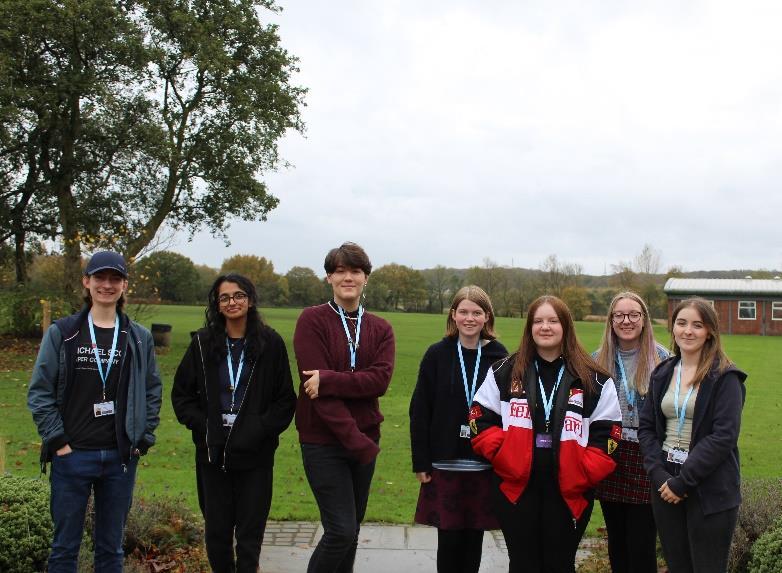













 Phil Duckworth gave us a spooky talk about the Pendle witches during Halloween week. He also did one for Tutankhamun week.
Phil Duckworth gave us a spooky talk about the Pendle witches during Halloween week. He also did one for Tutankhamun week.
























 By Grace O’Brien
By Grace O’Brien




 By Amy Moss
By Amy Moss

 By Phoebe Reast Jones
By Phoebe Reast Jones




 By Rosie Houghton
By Rosie Houghton















 By Freya Melia
By Freya Melia

















 By Scarlett Wright
By Scarlett Wright











